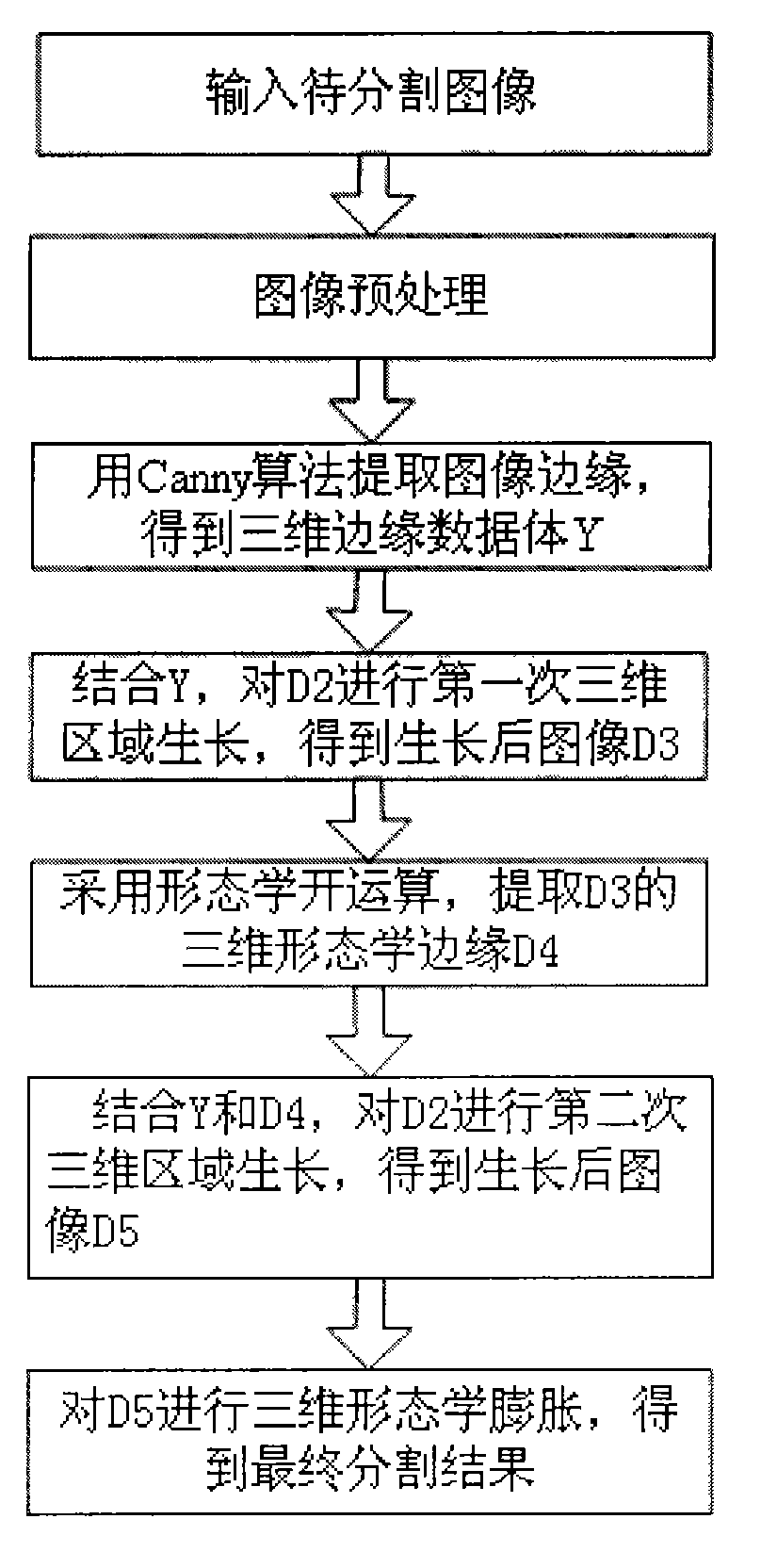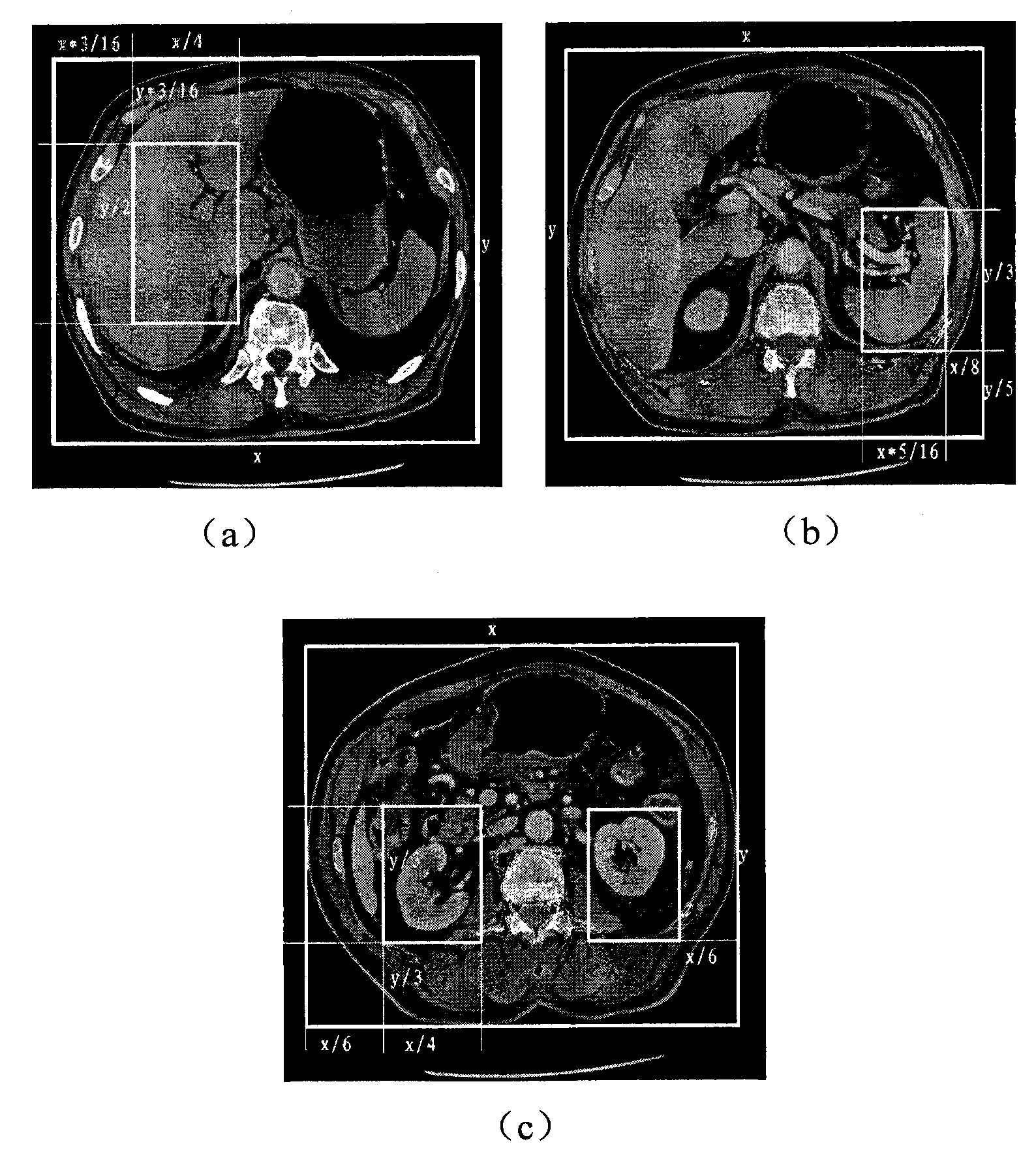Abdominal organ segmentation method based on secondary three-dimensional region growth
A three-dimensional area and abdomen technology, applied in the field of medical image processing, can solve the problems of different implementation steps, lack of robustness, lack of unified framework, etc., and achieve the effect of improving robustness and suppressing over-segmentation
- Summary
- Abstract
- Description
- Claims
- Application Information
AI Technical Summary
Problems solved by technology
Method used
Image
Examples
Embodiment Construction
[0023] refer to figure 1 , the specific implementation steps of the present invention are as follows:
[0024] Step 1: Input the image to be segmented.
[0025] Input a set of abdominal CT slices in DICOM format containing the complete liver, spleen and kidney organs. Since the images in DICOM format contain a lot of information that is not related to organ segmentation, in order to reduce the data storage space, only the images related to the image are read here. The information mainly includes the pixel data of each slice and the slice sequence identification number information required in the subsequent processing, so as to obtain a set of slice image data to be divided.
[0026] Step 2: Image preprocessing.
[0027] Preprocessing the sliced image data to be segmented mainly includes: intercepting the body area and removing image noise.
[0028] Capture the body area: Since the abdominal CT image contains a large number of non-body area pixels, in order to further redu...
PUM
 Login to View More
Login to View More Abstract
Description
Claims
Application Information
 Login to View More
Login to View More - R&D
- Intellectual Property
- Life Sciences
- Materials
- Tech Scout
- Unparalleled Data Quality
- Higher Quality Content
- 60% Fewer Hallucinations
Browse by: Latest US Patents, China's latest patents, Technical Efficacy Thesaurus, Application Domain, Technology Topic, Popular Technical Reports.
© 2025 PatSnap. All rights reserved.Legal|Privacy policy|Modern Slavery Act Transparency Statement|Sitemap|About US| Contact US: help@patsnap.com



